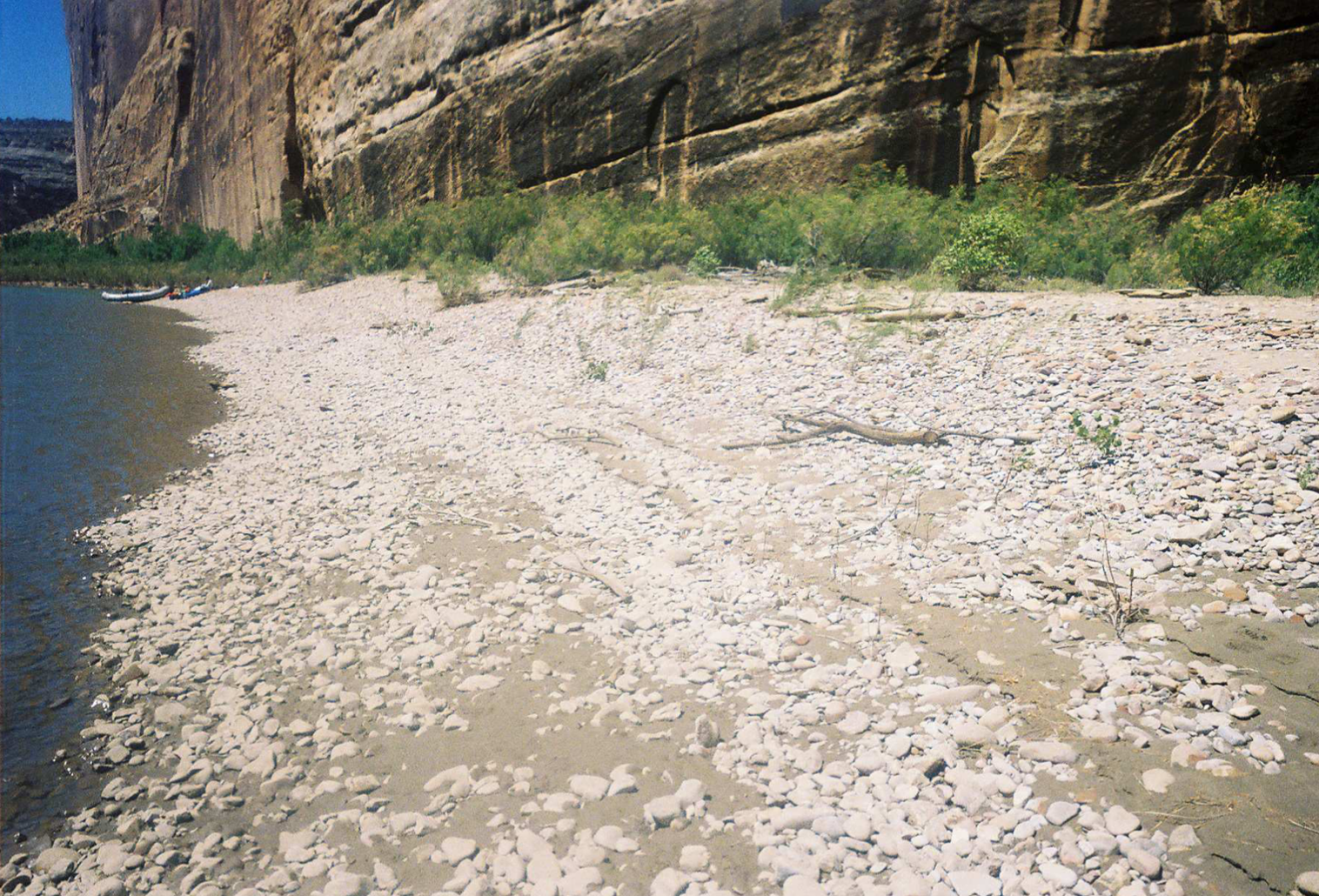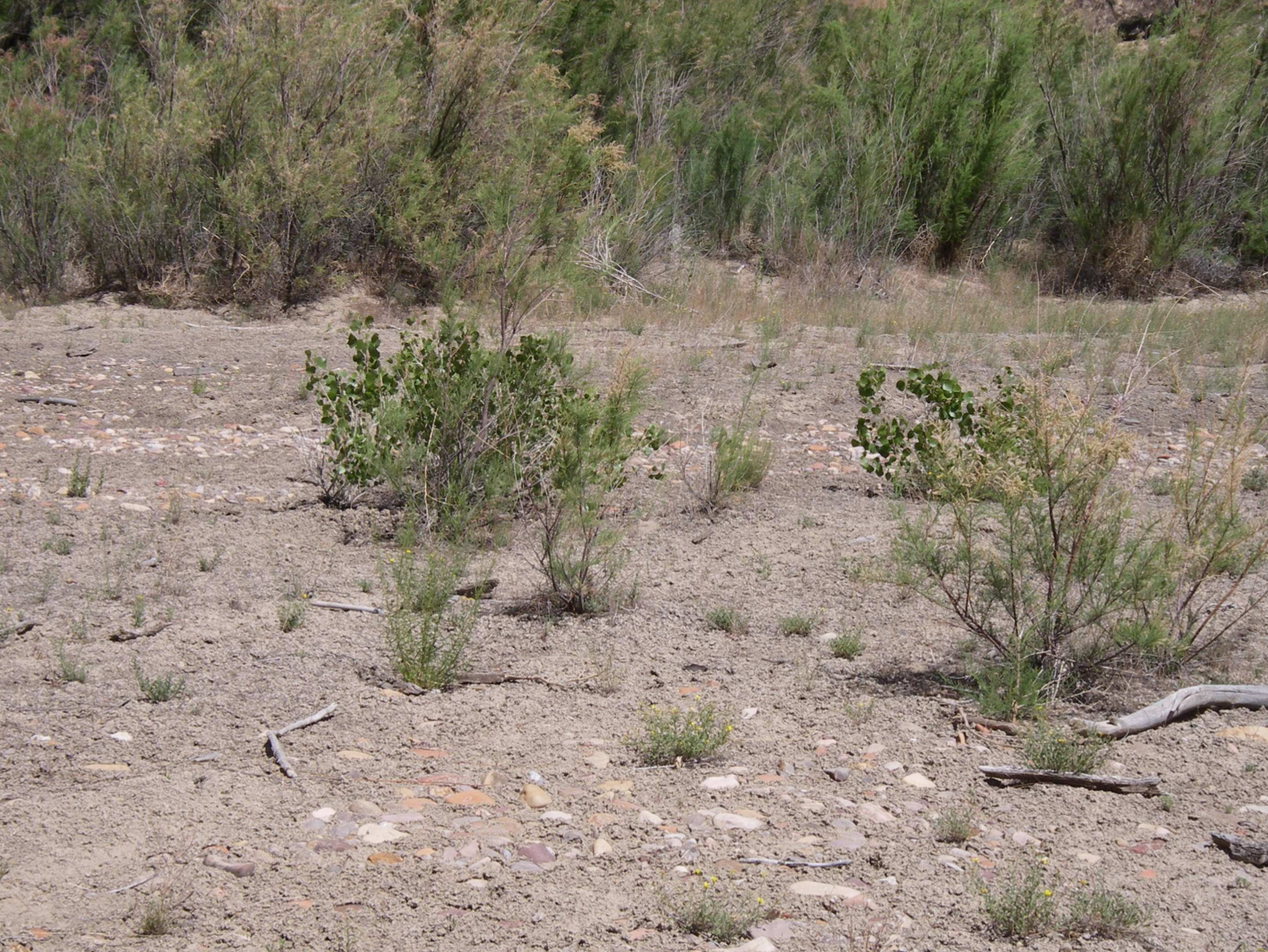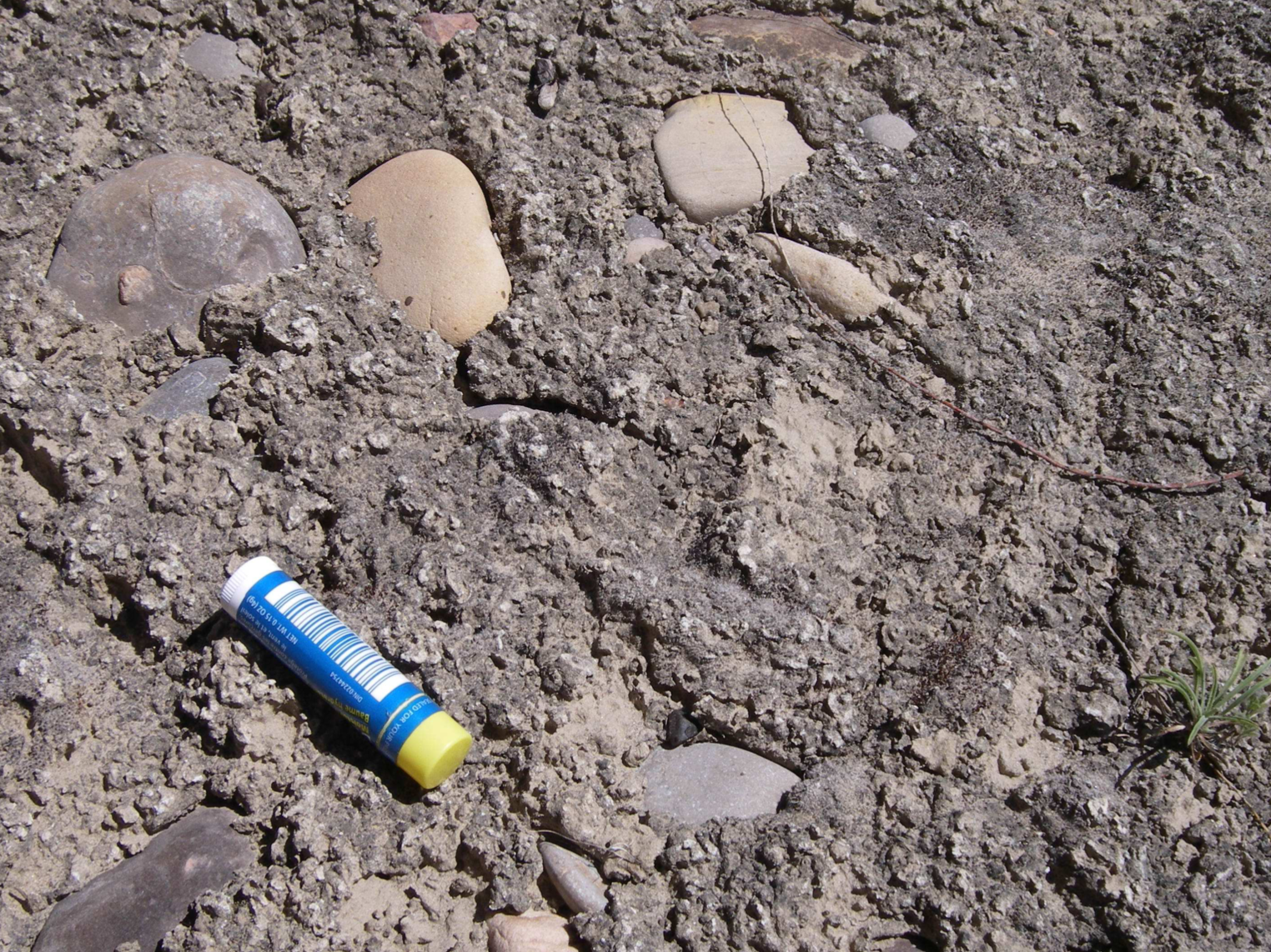The Green and Yampa Rivers meet in scenic Echo Park, a short fixed meander reach confined by vertical canyon walls of Weber Sandstone. The confluence is marked by a triangular island formed from the collision of the two rivers, and composed of a mixture of cobbles, gravel, sand and silt.
On the Yampa side of the confluence, a narrow post-dam floodplain quickly transitions into the pre-dam floodplain terrace (Figure 1). Even though the Yampa is still unregulated, it appears that it is no longer capable of flooding this island now that the floods of the Green River have been dampened by Flaming Gorge Dam, resulting in a terrace that has been undisturbed for the last 40 years.
Atop the Yampa side of the island, we were surprised to find a collection of relatively well-formed microbiotic soil crusts on the pre-dam flood plain (Figures 2 and 3). Microbiotic (also known as biological, cryptogamic, cryptobiotic, or microphytic) crusts are an important component of arid and semi-arid ecosystems, known for their fragility and slow development, causing them to be extremely vulnerable to disturbance. Estimates of the recovery and development time for these crusts range from several decades to several centuries (Belnap et al. 2001). Our observation of a relatively well-developed crust forming within the last 40 years is a strong argument that they are capable of forming on the decadal time scale.
Composed of a complex consortium of cyanobacteria, green algae, lichens, mosses, microfungi, and other bacteria (Belnap et al. 2001), microbiotic crusts help to stabilize the soil surface, reducing erosion. The importance of this function was extremely apparent during our stay at the Yampa confluence, as powerful up-canyon gusts would have easily stripped away any unconsolidated fine sediment on the island. These crusts are also important as a nutrient source, as they contain nitrogen fixing cyanobacteria, and many of the crustal organisms have a tendency to leak nutrients during wetting and drying, due to the lack of a waxy epidermis (Belnap et al. 2001).

Figure 1. Yampa side of the confluence island. The active floodplain (front, left) quickly transitions into the pre-dam floodplain terrace (back, right) leaving much of the island undisturbed (Photo by Robert Thompson).

Figure 2. Microbiotic crusts have formed on the unvegetated portions of the pre-dam floodplain (Photo by Eric Booth).

Figure 3. Close-up of the crust, chap-stick included for scale. The dark patches on the right show developing mosses, within which sporophytes were observed (Photo by Eric Booth).
References:
Belnap, J., J.H. Kaltenecker, R. Rosentreter, J. Williams, S. Leonard, D. Eldridge. 2001. Biological Soil Crusts: Ecology and Management. U.S. Department of the Interior, Technical Reference 1730-2.
